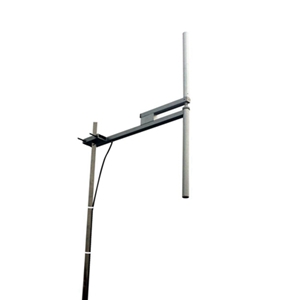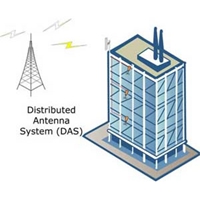Products Category
- FM Transmitter
- 0-50w 50w-1000w 2kw-10kw 10kw+
- TV Transmitter
- 0-50w 50-1kw 2kw-10kw
- FM Antenna
- TV Antenna
- Antenna Accessory
- Cable Connector Power Splitter Dummy Load
- RF Transistor
- Power Supply
- Audio Equipments
- DTV Front End Equipment
- Link System
- STL system Microwave Link system
- FM Radio
- Power Meter
- Other Products
- Special for Coronavirus
Products Tags
Fmuser Sites
- es.fmuser.net
- it.fmuser.net
- fr.fmuser.net
- de.fmuser.net
- af.fmuser.net ->Afrikaans
- sq.fmuser.net ->Albanian
- ar.fmuser.net ->Arabic
- hy.fmuser.net ->Armenian
- az.fmuser.net ->Azerbaijani
- eu.fmuser.net ->Basque
- be.fmuser.net ->Belarusian
- bg.fmuser.net ->Bulgarian
- ca.fmuser.net ->Catalan
- zh-CN.fmuser.net ->Chinese (Simplified)
- zh-TW.fmuser.net ->Chinese (Traditional)
- hr.fmuser.net ->Croatian
- cs.fmuser.net ->Czech
- da.fmuser.net ->Danish
- nl.fmuser.net ->Dutch
- et.fmuser.net ->Estonian
- tl.fmuser.net ->Filipino
- fi.fmuser.net ->Finnish
- fr.fmuser.net ->French
- gl.fmuser.net ->Galician
- ka.fmuser.net ->Georgian
- de.fmuser.net ->German
- el.fmuser.net ->Greek
- ht.fmuser.net ->Haitian Creole
- iw.fmuser.net ->Hebrew
- hi.fmuser.net ->Hindi
- hu.fmuser.net ->Hungarian
- is.fmuser.net ->Icelandic
- id.fmuser.net ->Indonesian
- ga.fmuser.net ->Irish
- it.fmuser.net ->Italian
- ja.fmuser.net ->Japanese
- ko.fmuser.net ->Korean
- lv.fmuser.net ->Latvian
- lt.fmuser.net ->Lithuanian
- mk.fmuser.net ->Macedonian
- ms.fmuser.net ->Malay
- mt.fmuser.net ->Maltese
- no.fmuser.net ->Norwegian
- fa.fmuser.net ->Persian
- pl.fmuser.net ->Polish
- pt.fmuser.net ->Portuguese
- ro.fmuser.net ->Romanian
- ru.fmuser.net ->Russian
- sr.fmuser.net ->Serbian
- sk.fmuser.net ->Slovak
- sl.fmuser.net ->Slovenian
- es.fmuser.net ->Spanish
- sw.fmuser.net ->Swahili
- sv.fmuser.net ->Swedish
- th.fmuser.net ->Thai
- tr.fmuser.net ->Turkish
- uk.fmuser.net ->Ukrainian
- ur.fmuser.net ->Urdu
- vi.fmuser.net ->Vietnamese
- cy.fmuser.net ->Welsh
- yi.fmuser.net ->Yiddish
Improving the Two-Way Radio Range
One of the most persistent challenges of using two-way radios (walkie-talkies) is moving out of two-way radio range and cutting off your conversation. You can’t fight physics – under specific conditions, radio signals travel in highly specific ways. If you violate these principles, your conversation fades out or ends altogether. Depending on the kind of radio you’re using, your repeater network, the design of your antenna, obstacles and terrain, a radio signal can travel anywhere from a few hundred feet to several miles. If your workers consistently get cut off because they’re getting too far away, you may benefit from extending the effective range of your radios. To make sure you invest in the right range-extending strategies, it is important to understand the fundamentals of how two-way radios work.

What determines a radio’s range?
Several variables influence a radio’s range, including:
The power of the radio
The design of your radio antenna system
The frequency band the radio is using
Building material barriers such as concrete, metal and glass
Surrounding terrain
Whether the user is indoors or outdoors
It’s essential to weigh all these factors when you’re trying to troubleshoot signal loss in your radio fleet. These steps will help you figure out how to solve the problem, or prevent range degradation in the first place.
Radio SelectionXPR7550_large Commercial and Professional class radios are generally rated from 1 to 5 watts of power. Depending on the expected coverage area, it often pays dividends to invest in more powerful radios. It is also a good idea to choose digital radios. In general, digital radios maintain a clearer signal to the edges of the coverage area, which essentially extends range because you can communicate more effectively over longer distances.

High-rise buildings
Manufacturing facilities and distribution centers
Commercial and school campuses
Hospital complexes
Stadiums and arenas
Any facility that is large enough to require added radio range coverage

Does VHF or UHF Deliver Better Two-Way Radio Range:? Two-way radios operate within VHF (Very High Frequency; 30-300 MHz) and UHF (Ultra High Frequency; 300 MHz to 3 GHz) wavebands. VHF wavelengths are longer, which lets signals travel greater distances, but also makes them less effective in highly obstructed areas. UHF wavelengths are shorter, which enables them to penetrate concrete, metal, wood and other obstacles more effectively than VHF. Overall, UHF is more popular because it provides a better all-around signal (except when you need to transmit outdoors across great distances). Most commercial radios are available in either VHF or UHF wavebands, so it is a good idea to test both to see which one is better suited for your environment. Bi-Directional Amplifiers (BDAs) Improve Coveragebda_imageLarge BDAs are signal boosters required by law in many localities so first responders can stay in constant contact throughout any facility in an emergency situation. They are also excellent for day-to-day operations to keep remote workers and mobile maintenance personnel connected. They’re ideal for use in cement and steel structures that have poor reception areas such as basements, stairways, tunnels, parking garages or any isolated area where wireless signals do not penetrate. Safety BDAs are also designed to work under duress, such as high heat, chemical splash, high humidity, underground tunnels, with no electricity, etc. No matter what your coverage issues you face, Fmuser provides the equipment, services and expertise you need.
If you need any fm/tv equipment, please feel free to contact us: [email protected]
You may also like:
How to Make 5 Km Long Range FM Transmitter?
Understanding Wireless Range Calculations
What is Radio Receiver Dynamic Range?





